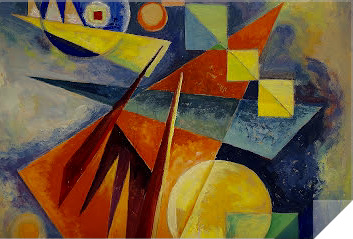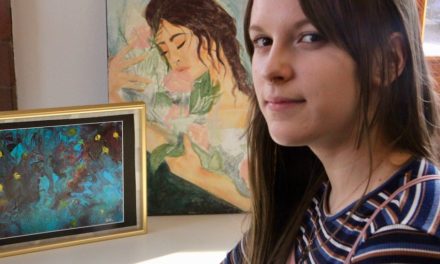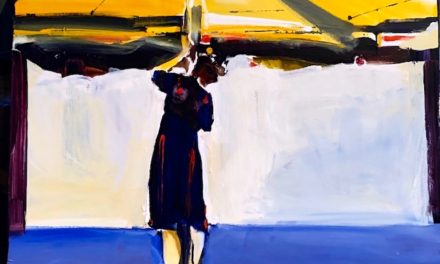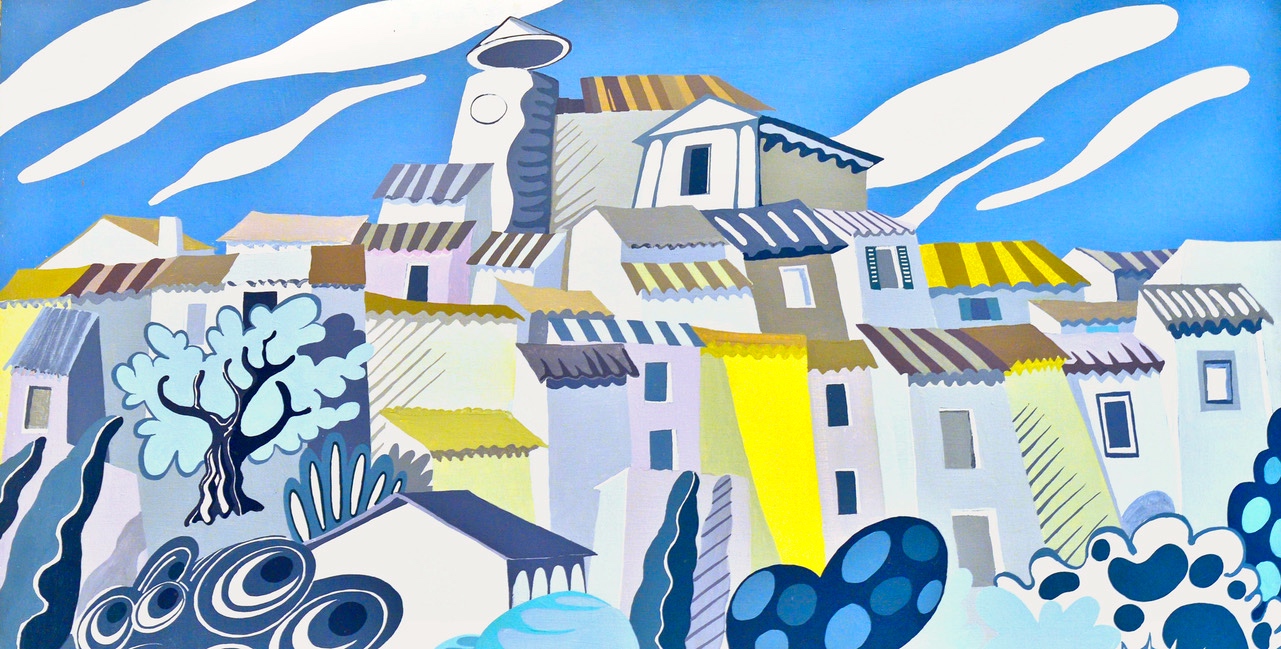(Above: One of artist Maude Kerns many “non-objective” creations, part of In the Realm of the Spirit, a show at the Eugene art center that bears her name.)
By Randi Bjornstad
The Maude Kerns Art Center opens its 2024 season, appropriately enough, with a large exhibit of “non-objective” artwork by its namesake, Maude Kerns.
The show, titled In the Realm of the Spirit, is a large one, showing several dozen of her avant garde works that evoke modern artistic sensibilities well beyond her actual lifespan, from 1876 to 1965.
The show includes many pieces from private as well as the art center’s own extensive collections of Kerns’ work, as well as art that has never been exhibited before, from the archives of the Lane County History Museum.
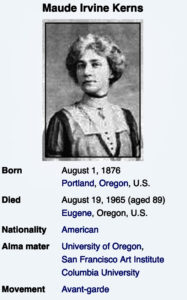
Thumbnail biography of Maude Kerns; source Wikipedia
An unusual and interesting feature of the display is several pieces of handwritten correspondence exchanged between Maude Kerns and Rolph Scarlett, another well-known “non-objective” painter of the time. Both Kerns and Scarlett held each other’s work in high esteem, and both exhibited at the Museum of Non-Objective Painting, which later became the Guggenheim Museum.
At the same time as the Maude Kerns Art Center exhibit, the Lane County History Museum is showing additional Kerns works from its archives in a show titled Blue Vesper: Maude Irvine Kerns.
A special event during the show at the Maude Kerns Art Center is an hour-long documentary film that will be shown at 1 p.m. on Saturday, Feb. 3. Betrayal: The Life and Art of Rudolf Bauer. Bauer was a protégé — and onetime lover — of Hilla Rebay, the first director of the Museum of Non-Objective Painting. Rebay came to know of Kerns’ art through Rolph Scarlett, who in turn introduced Bauer to Kerns’ art.
The reference in the title of the documentary to betrayal involves Bauer’s treatment by Solomon Guggenheim, who obviously saw the importance and value of the artist’s work but allegedly treated him unfairly in business dealings.
Bauer, who had spent several months in a Germany Gestapo prison in 1938 as punishment for what the government termed his “degenerate art,” moved to the United States the following year, where Rebay and Solomon Guggenheim had become both professionally and personally involved.
Bauer signed a business contract with Guggenheim, believing, perhaps in part because of language difficulties, that he would receive payment of $300,000 for 110 of his works. Instead, Guggenheim put the money in trust and paid Bauer a monthly stipend. Under the contract, Bauer also was required to leave his future work to the Guggenheim foundation. When Bauer’s further expectation of having an integral role in running the foundation turned out to be untrue, he stopped painting altogether. His work basically disappeared from public view for several decades before being rediscovered by art museums — including the Guggenheim — and the public.
Although Bauer and Kerns were artistic contemporaries — she lived from 1876 to 1965 and he from 1889 to 1953 — and he had become an admirer of her artwork through Scarlett, neither of their Wikipedia biographies indicates that they ever met or corresponded.
Maude Kerns at Maude Kerns: In the Realm of the Spirit
When: Through Feb. 9, 2024 (closed Jan. 13-15)
Where: 1910 E. 15th Ave., Eugene (corner of 15th and Villard streets)
Gallery hours: 10 a.m. to 5:30 p.m. Monday through Friday; noon to 4 p.m. on Saturday during exhibits
Information: 541-345-1571 or mkartcenter.org
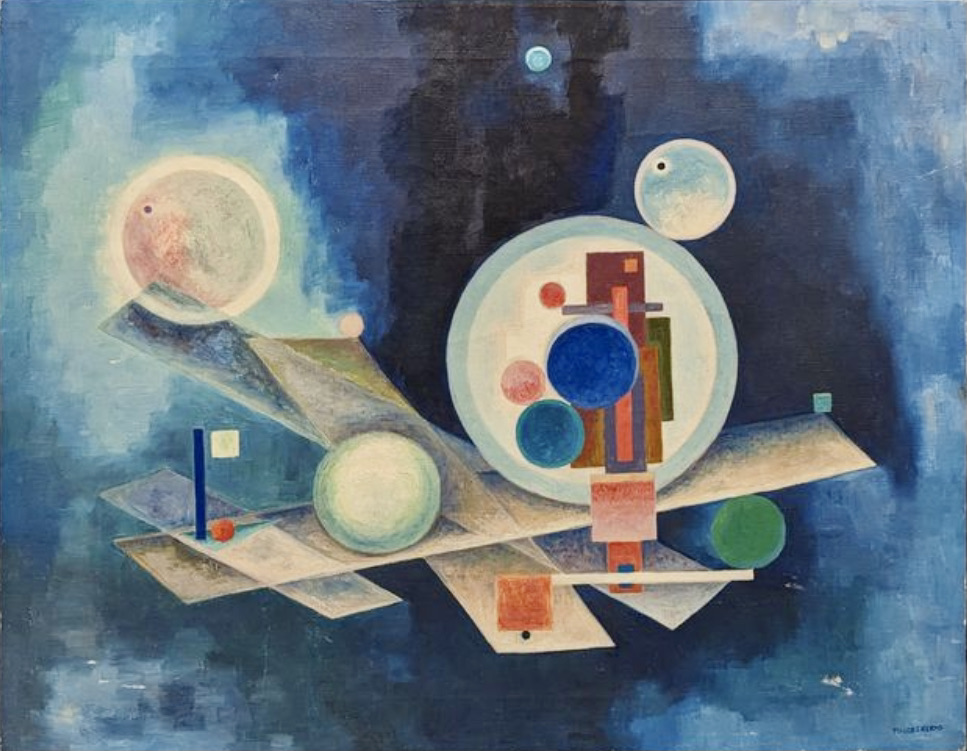
Above: Another example of Maude Kerns’ fascination with and mastery of “non-objective” art

